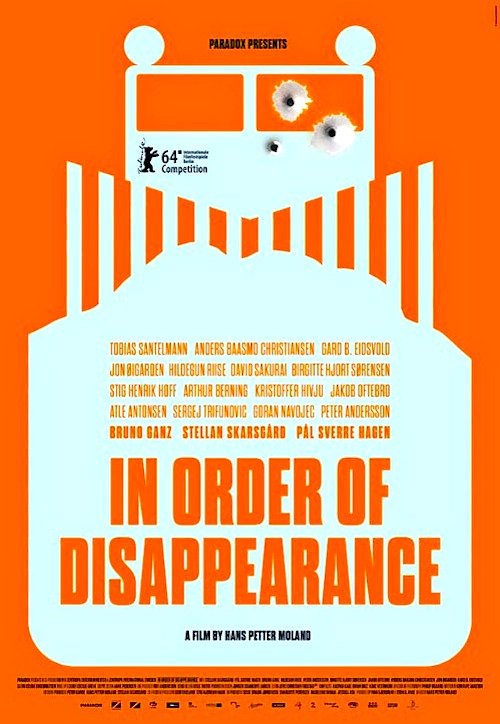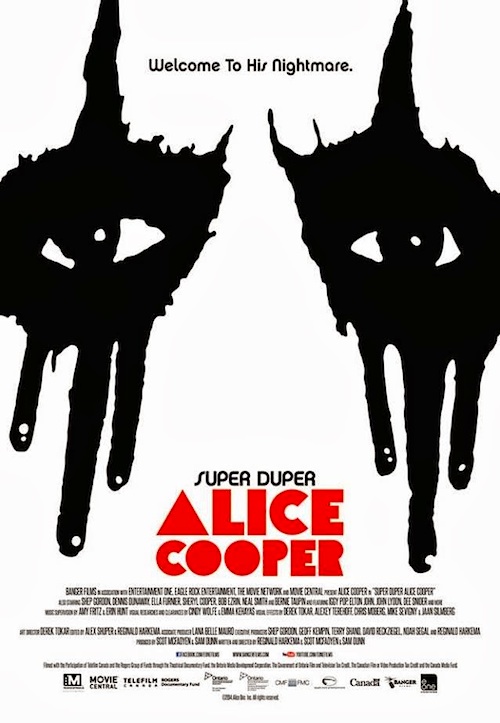By Joe Bendel. If revenge is a dish best served cold, then provincial Norway is the perfect place for it. Technically, Nils Dickman is Swedish and he will serve up payback with Ikea-like efficiency in Hans Petter Moland’s comic noir In Order of Disappearance, which screens during the 2014 Tribeca Film Festival.
Dickman (yes, there are comments made regarding his surname) is not a gangster, he is a snowplow driver, but he becomes a very put-out snowplow driver when his son is murdered by a drug gang. Maybe it is in his blood. His older brother was once a gangster, nick-named “Wingman” in honor of Top Gun. Dickman’s anger and initiative are sufficient to ice the low level lackeys who administered his son’s fake overdose, but he will need some help getting to their boss, a legacy kingpin known as “The Count.” As Dickman works his way up the food chain, The Count responds by igniting a gang war with the Serbian mob he assumes is responsible for his underlings’ disappearances.
 For some reason, Tribeca programmers have a soft spot for films about snowplow drivers. Even though Emanuel Hoss-Desmarais’s Whitewash won last year’s best new narrative director award, Disappearance is the film to see. Screenwriter Kim Fupz Aakeson (who also wrote the radically different Perfect Sense) neatly balances moody revenge drama (in the tradition of the original Death Wish) with generous helpings of dry, black comedy. In fact, there is a running visual gag that gets funnier and funnier through repetition.
For some reason, Tribeca programmers have a soft spot for films about snowplow drivers. Even though Emanuel Hoss-Desmarais’s Whitewash won last year’s best new narrative director award, Disappearance is the film to see. Screenwriter Kim Fupz Aakeson (who also wrote the radically different Perfect Sense) neatly balances moody revenge drama (in the tradition of the original Death Wish) with generous helpings of dry, black comedy. In fact, there is a running visual gag that gets funnier and funnier through repetition.
On the other hand, Stellan Skarsgård plays it scrupulously straight as Dickman. He is about as Nordic as a vigilante can get. Despite his severe reserve, viewers get a sense he is so tightly wound, he might shatter if he tipped over. It takes a couple beats to realize the ever-reliable Bruno Ganz appears as the grieving Serbian godfather (known simply as Papa), but his sly turn adds the icing to this frozen ice-cream cake.
On paper, Disappearance would sound like a grim and slightly gory story, but it is great fun on the screen. Moland’s subtle touch and Aakeson’s inventive but rigorously logical plot developments keep the audience locked in every step of the way. Highly recommended for fans of gangster movies with a sardonic attitude, In Order of Disappearance screens again Sunday (4/20) and Wednesday (4/23) during this year’s Tribeca Film Festival.
LFM GRADE: A-
Posted on April 18th, 2014 at 11:11pm.




